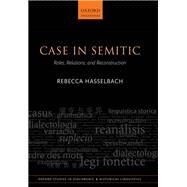Case in Semitic Roles, Relations, and Reconstruction
, by Hasselbach, Rebecca- ISBN: 9780199671809 | 019967180X
- Cover: Hardcover
- Copyright: 6/10/2013
This book sets out a new reconstruction for the Semitic case system. It is based on a detailed analysis of the expression of grammatical roles and relations in the attested Semitic languages and, for the first time, brings typological methods to bear in the study of these features in Semitic languages and their reconstruction for proto-Semitic. Professor Hasselbach supports her argument with detailed analyses of a wide range of data and presents it in a way that will be accessible to both Semitists and typologists. The volume is divided into seven chapters: the first discusses basic methodologies used in Semitic linguistics and the limitations thereof. The second presents the evidence for morphological case-marking in the individual Semitic languages, the conventional reconstruction of Proto-Semitic, and the evidence which conflicts with it. The third introduces typological concepts and methods and their deployment in Semitic. Chapter 4 considers the case alignment of early Semitic. Chapter 5 presents a detailed study of marking structures and patterns and considers what these reveal about the nature of the original case system. Chapter 6 looks at the functions of case markers, considers the light they cast on the nominal system, and shows that the reconstruction of early Semitic as ergative is implausible. In the final chapter the author argues that early Semitic had a different nominal system from that of the later Semitic languages. She shows that the course of its development has parallels in other Afroasiatic languages, including Berber and Cushitic. Her book sheds important new light on the history of the Semitic languages and on the early development of the Afro-Asiatic language family as a whole.







